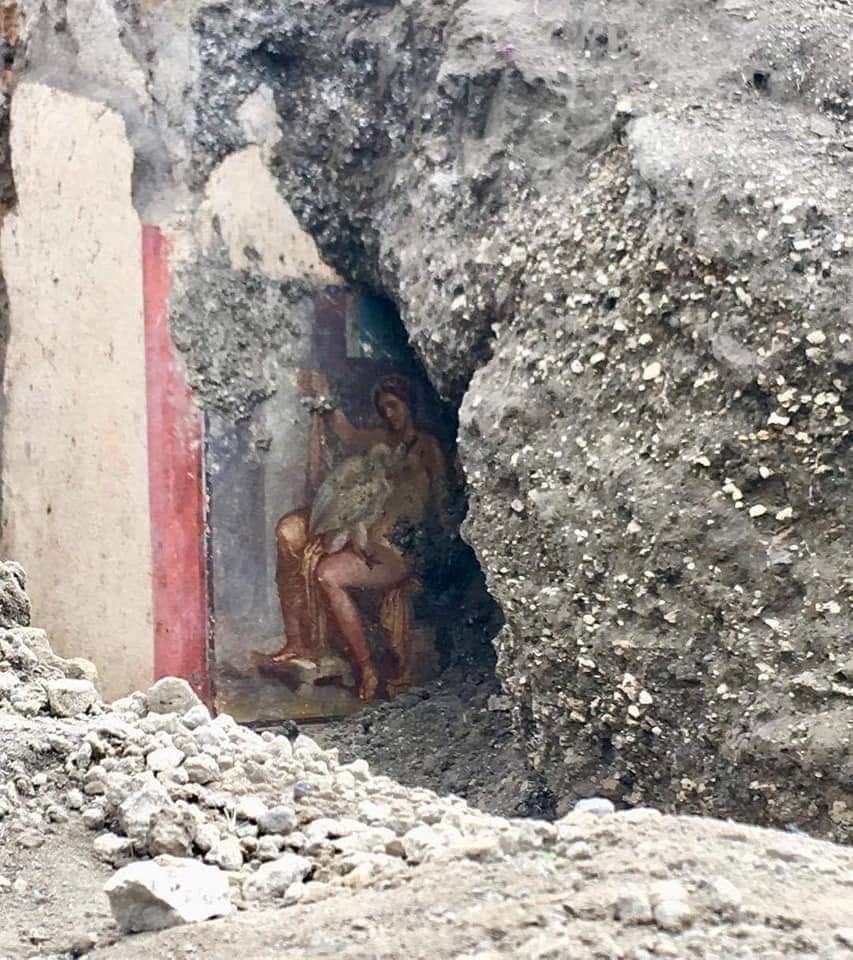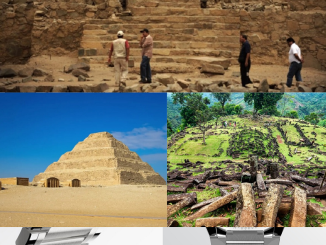In 2018, the ancient city of Pompeii, frozen in time by the devastating eruption of Mount Vesuvius in 79 AD, captured the world’s attention once again. With bated breath, archaeologists and enthusiasts awaited the unveiling of Regio V, an area long speculated to hold remarkable finds. The anticipation reached a crescendo when the first images emerged, revealing glimpses of the past in stunning detail. Among these revelations was a mesmerizing depiction of the Greek myth “Leda and the Swan,” a piece that ignited the archaeological world and signaled the beginning of a remarkable journey through history.

The Unveiling of Regio V: Pompeii’s Regio V had long been shrouded in mystery, its secrets tantalizingly out of reach. When the decision was made to open this area to the public, expectations soared. And it did not disappoint. The unveiling of Regio V provided a rare opportunity to delve deeper into the lives of Pompeii’s inhabitants, offering a window into their daily existence frozen in time by the eruption. Among the countless treasures unearthed, one stood out with unparalleled allure – the depiction of “Leda and the Swan.”
The Enigmatic “Leda and the Swan”: The image of “Leda and the Swan” found in Pompeii’s Regio V is a testament to the enduring power of ancient artistry. Depicting the mythological union of Zeus disguised as a swan and Leda, Queen of Sparta, this fresco is a masterpiece of both artistic skill and narrative complexity. The discovery of this artwork not only sheds light on the cultural and artistic sensibilities of Pompeii’s residents but also serves as a poignant reminder of the timelessness of myth and legend.
The Symbolism and Significance: “Leda and the Swan” is more than just a stunning piece of art; it is a symbol of the interconnectedness of ancient civilizations and the enduring legacy of classical mythology. The myth itself has been depicted countless times throughout history, from ancient pottery to Renaissance paintings, each iteration adding layers of meaning and interpretation. In the context of Pompeii, this fresco serves as a reminder of the city’s cosmopolitan nature, where Greek and Roman influences intertwined to create a unique cultural tapestry.
Ancient Discoveries and Ongoing Exploration: The discovery of “Leda and the Swan” is just one chapter in Pompeii’s ongoing saga of exploration and discovery. In the years since the unveiling of Regio V, archaeologists have continued to unearth remarkable finds, each one adding to our understanding of this ancient city and its inhabitants. From intricately preserved artifacts to hauntingly beautiful frescoes, Pompeii continues to captivate and inspire, reminding us of the fragility of human existence and the enduring power of the past.
Conclusion: As we marvel at the breathtaking beauty of “Leda and the Swan” and the myriad treasures of Pompeii, we are reminded of the inexorable passage of time and the impermanence of human civilization. Yet, through the efforts of dedicated archaeologists and historians, we are able to glimpse moments of ancient life preserved for eternity, offering us a window into the past and enriching our understanding of the present. Pompeii’s Regio V may have set the archaeological world ablaze in 2018, but its flames continue to burn brightly, illuminating the path to discovery and enlightenment for generations to come.


